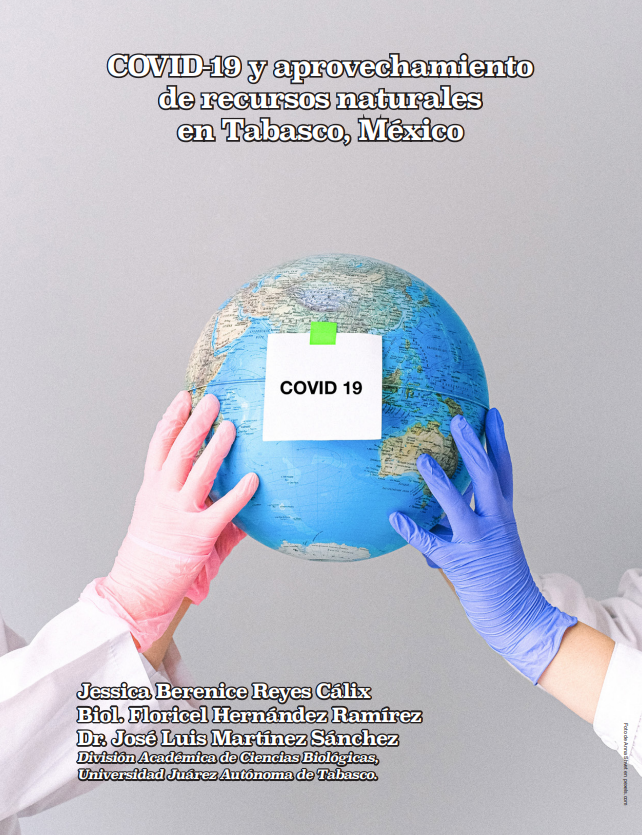COVID-19 y aprovechamiento de recursos naturales en Tabasco, México
Keywords:
survey, virus, local, rural
Abstract
The state of Tabasco is rich in natural resources such as wild plants and animals. The objective was to know the effect of the COVID-19 pandemic on its use and abundance. As a hypothesis, it was expected that a greater use would produce a low abundance of resources, or the opposite. As of March 20, 2020, a survey of 27 questions was applied to 1,963 resource users. The appreciation of use during the pandemic was more of high use, and the appreciation of high abundance was higher before the pandemic than it is today. Unlike other studies, the pandemic in Tabasco has produced a greater exploitation of natural resources.
Downloads
Download data is not yet available.
References
Coronavirus Resource Center [Internet], John Hopkins University of Medicine [consultado 17 Feb 2022], https://coronavirus.jhu.edu/map.html
Encuesta Nacional de Ocupación y Empleo (ENOE), Población de 15 años y más de edad. Indicadores de Ocupación y Empleo, [Internet], https://www.inegi.org.mx/ programas/enoe/15ymas/ [consultado 28 sept 2021].
Gilby, B.L.; Henderson, C.J.; Old, A.D.; et al. Potentially negative ecological consequences of animal redistribution on beaches during COVID-19 lockdown, Biol. Cons. 253, 108926, 2021.
INEGI. Instituto Nacional de Geografía e Informática [Internet], 2020. http:/ / cuentame.inegi.org.mx/monografias/informacion/tab/poblacion/distribucion.aspx?te ma=me&e=27
Rivero Jimenez B.; Conde-Caballero, D. y Juárez, L.M. Loneliness Among the Elderly in Rural Contexts: A Mixed-Method Study Protocol, Int. J. Qual. Meth., 20, pp. 1–9, 2021.
Secretaria de Bienestar, Sustentabilidad y Cambio Climático, Estrategia estatal de reducciones de emisiones por deforestación y degradación forestal de Tabasco (EEREEDDD+ Tabasco) 2020 – 2030, México, 2020, p. 144.
Soto, E.H.; Botero, C.M.; Milanes, C.B.; et al. How does the beach ecosystem change without tourists during COVID-19 lockdown? Biol. Cons, 255, 108972, 2021.
Svensson, E. Guidelines to statistical evaluation of data from rating scales and questionnaires. J. Rehab. Med., 33, pp. 47–48, 2001.
White, P.C.L.; Newton-Cross, G.A.; Moberly, R.L.; et al. The current and future management of wild mammals hunted with dogs in England and Wales. J. Envir. Manag., 67, pp. 187-197, 2003.
White, P.C.L.; Jennings, N.V.; Renwick, A.R. et al. Questionnaires in ecology: a review of past use and recommendations for best practice. J. App. Ecol. 42, pp. 421– 430, 2005.
Encuesta Nacional de Ocupación y Empleo (ENOE), Población de 15 años y más de edad. Indicadores de Ocupación y Empleo, [Internet], https://www.inegi.org.mx/ programas/enoe/15ymas/ [consultado 28 sept 2021].
Gilby, B.L.; Henderson, C.J.; Old, A.D.; et al. Potentially negative ecological consequences of animal redistribution on beaches during COVID-19 lockdown, Biol. Cons. 253, 108926, 2021.
INEGI. Instituto Nacional de Geografía e Informática [Internet], 2020. http:/ / cuentame.inegi.org.mx/monografias/informacion/tab/poblacion/distribucion.aspx?te ma=me&e=27
Rivero Jimenez B.; Conde-Caballero, D. y Juárez, L.M. Loneliness Among the Elderly in Rural Contexts: A Mixed-Method Study Protocol, Int. J. Qual. Meth., 20, pp. 1–9, 2021.
Secretaria de Bienestar, Sustentabilidad y Cambio Climático, Estrategia estatal de reducciones de emisiones por deforestación y degradación forestal de Tabasco (EEREEDDD+ Tabasco) 2020 – 2030, México, 2020, p. 144.
Soto, E.H.; Botero, C.M.; Milanes, C.B.; et al. How does the beach ecosystem change without tourists during COVID-19 lockdown? Biol. Cons, 255, 108972, 2021.
Svensson, E. Guidelines to statistical evaluation of data from rating scales and questionnaires. J. Rehab. Med., 33, pp. 47–48, 2001.
White, P.C.L.; Newton-Cross, G.A.; Moberly, R.L.; et al. The current and future management of wild mammals hunted with dogs in England and Wales. J. Envir. Manag., 67, pp. 187-197, 2003.
White, P.C.L.; Jennings, N.V.; Renwick, A.R. et al. Questionnaires in ecology: a review of past use and recommendations for best practice. J. App. Ecol. 42, pp. 421– 430, 2005.

Published
2023-09-25
How to Cite
Reyes Cálix, J. B., Hernández Ramírez, F., & Martínez Sánchez, osé L. (2023). COVID-19 y aprovechamiento de recursos naturales en Tabasco, México. Contactos, Revista De Educación En Ciencias E Ingeniería, (130), 17-26. Retrieved from https://contactos.izt.uam.mx/index.php/contactos/article/view/291
Section
Artículos





